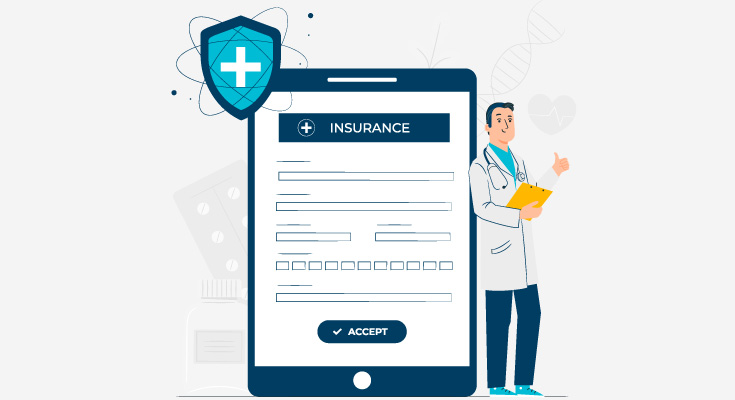Verifying patient insurance data has multiple benefits, even though it is an overwhelming task for most institutions. No medical professional wants to deal with insurance as it’s an enormous hassle. It’s difficult to comply with and verifying insurance means going through a plethora of steps. With the rising amount of insurance fraud since the global pandemic, healthcare institutions need to verify insurance documents. The insurance verification process is not at all simple, there are several things involved. Verifying insurance is crucial for hospitals to ensure they can provide the best possible care with minimum fraud.
What Is the Health Insurance Verification Process?
The entire process of insurance verification revolves around a series of steps that check whether a patient can make a reimbursable claim to the insurance provider. The verification process involves multiple parties, which makes the process more complicated. Different patients have different insurance providers, each insurance provider has its own set of rules.
Steps for Verifying A Patient’s Insurance Information
While different insurance providers have different policies, the foundation of steps remains the same. There are three main steps any healthcare institution has to follow to successfully verify a patient’s insurance data.
1. Collect Patient’s Insurance Data
The foremost thing that you have to do is to collect some basic information from the patient as soon as possible. Insurance verification can be tiresome and time-consuming, so the sooner the verification process starts, the better. Lack of time in the insurance verification process leads to error, and that’s the only thing fraudsters aim for.
It is ideal to ask for insurance information when the patient calls for the first time to set an appointment. Vital data that you should collect initially are:
- Patient’s name and date of birth
- Name of the insurance company
- Name of the primary insurance holder (and their relationship with the patient, if applicable)
- Patient’s policy number and group ID number
- Address and phone number of the insurance company.
- Confirm whether the patient holds any secondary insurance policies (if they do, you’ll need to ask the same questions for every policy)
2. Reach out to the Insurance Company Before the Patient Visit
This is probably the most time-consuming process out of all the steps. The process can easily take 24-72 hours. The ideal scenario is to reach out to the insurance company 72 hours before the patient visits the hospital. Completion of this step will ensure you have all the information you need before the patient walks through your doors.
A. Contact By Phone
The most common and straightforward way of reaching an insurance company is to just call them. From the information that you’ve got from the patient, it’s easy to find the number of the insurance carrier.
Once you get through to them, the first thing to do is to ensure you’re in touch with a representative. A lot of insurance providers have contact numbers for hospital admissions and referrals. Once you confirm that you’re in touch with the entity you want to talk to, the representative on the other side will ask you for some information to confirm whether this is a HIPAA-secure exchange. Once you’re through that, the representative will ask for the patient’s information for cross-checking with their database.
Most of the time, you’ll be able to get through to a representative pretty easily. If you’re unable to get in touch with them, calling at a different time or on a different day is the only solution.
B. Search Online
Some healthcare institutions don’t have the resources that can sit around the phone all day trying to reach out to a representative. Fortunately, there’s a way to skip telephonic communication altogether and seek out online eligibility checking resources. There’s no one particular source that can act as a gold standard, you may have to go through a series of resources and directories. If the patient has a huge insurance carrier, then chances are hospitals can submit insurance-related questions on the website and verify the insurance data. The top players in the health insurance industry in the USA are “Humana, United Healthcare, Aetna, and Cigna”.
3. Acquire As Much Information As You Can
Let’s say you got through to a representative, it’s crucial that you gather as much information as you can for insurance verification. There are some common questions that you need to ask. Most healthcare institutions have their own set of questions they need to ask for verification. Some common questions are:
- Can you confirm the patient’s policy number and group number, the name of the primary insurance holder, and the relation of the primary holder with the patient?
- What is the claims address?
- Is this policy currently active, and what’s the end date?
- How many therapy visits does the patient have left this year?
- What is the patient’s deductible?
- Does the insurance company require physician referrals, pre-authorizations, and certification of medical necessity for reimbursement?
- Are there any specific coverage limitations or documentation required?
The list of questions above are some of the most common questions, however the list increases and decreases based on the insurance type, hospital, and other factors. That’s all a healthcare institution has to do to verify insurance policy for reducing fraud and confirming eligibility.
Reverify Insurance Every Month
To stay on top of things and ensure that you’re aware of any changes in the insurance policy, hospitals must re-verify every month. Patients don’t have enough time to remind hospitals of every slight change. It is just a good practice to verify your patient’s insurance plan on a monthly basis.





